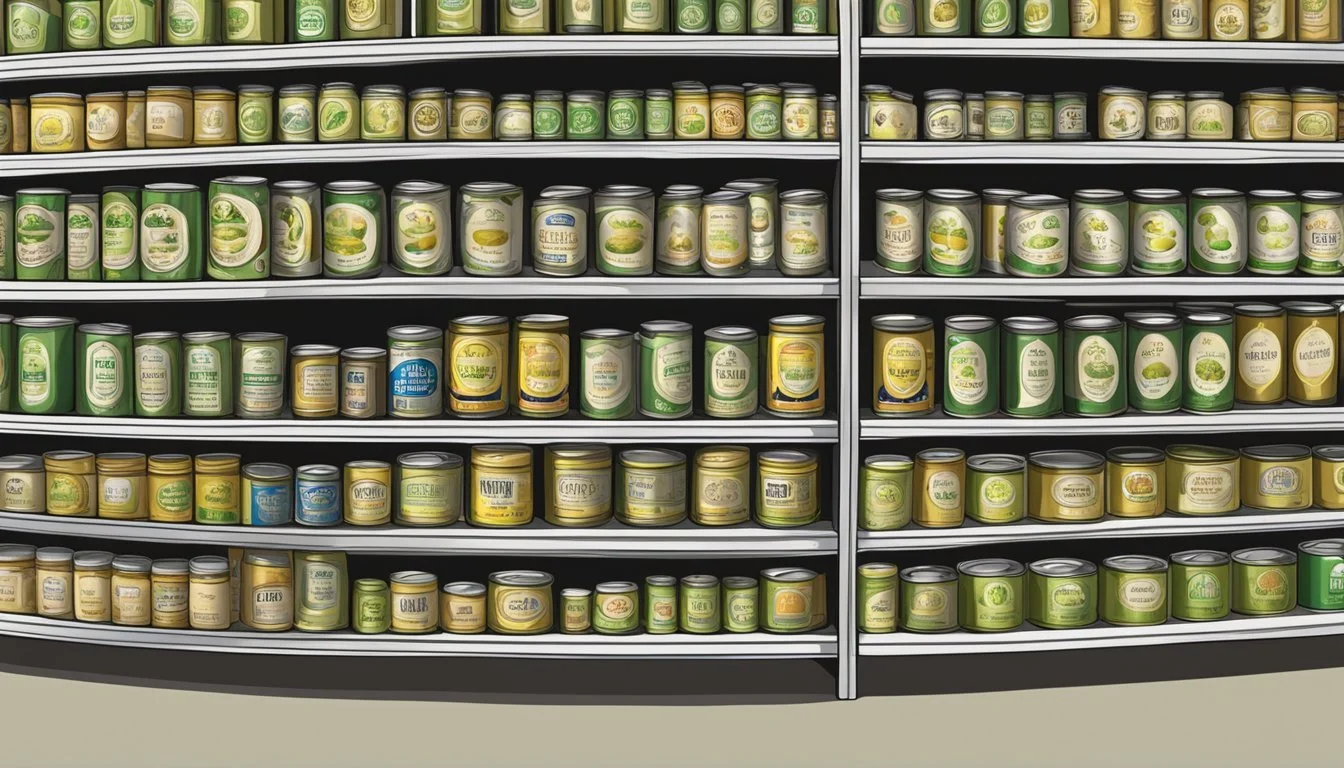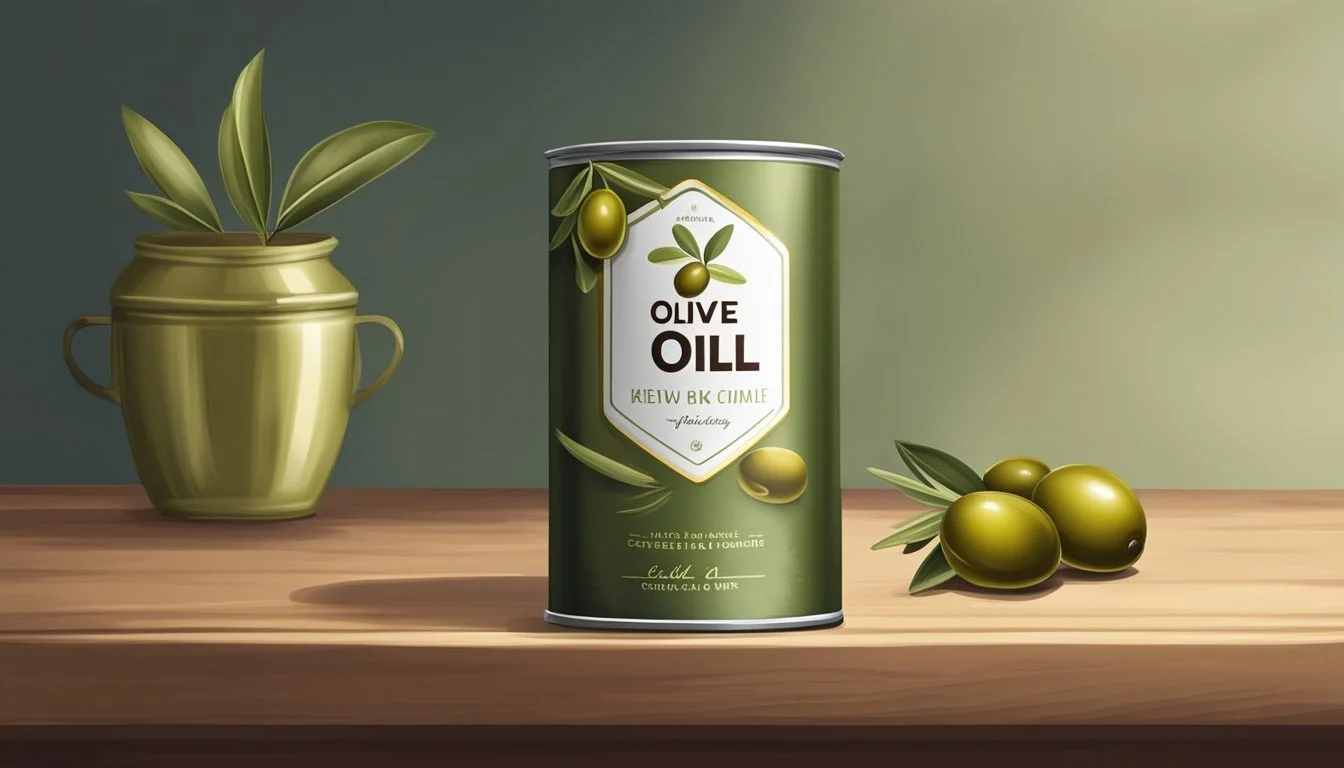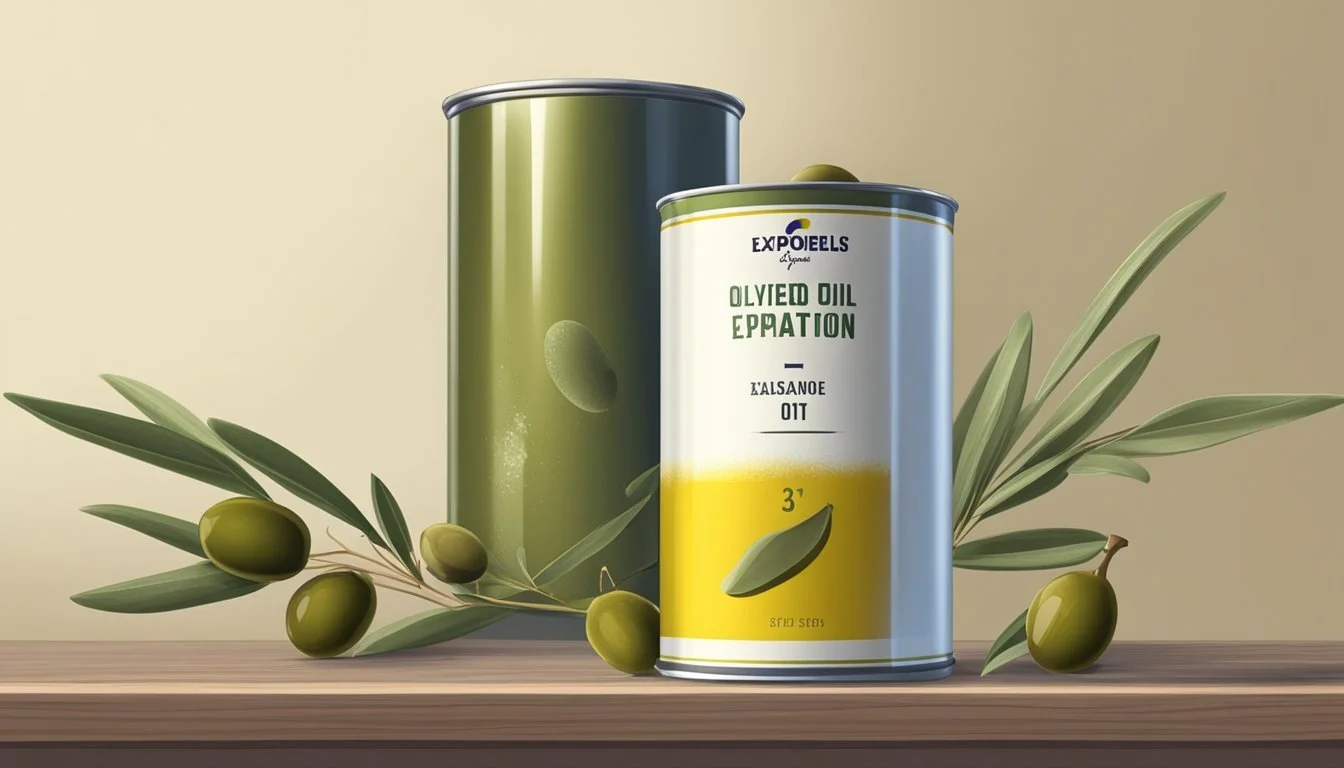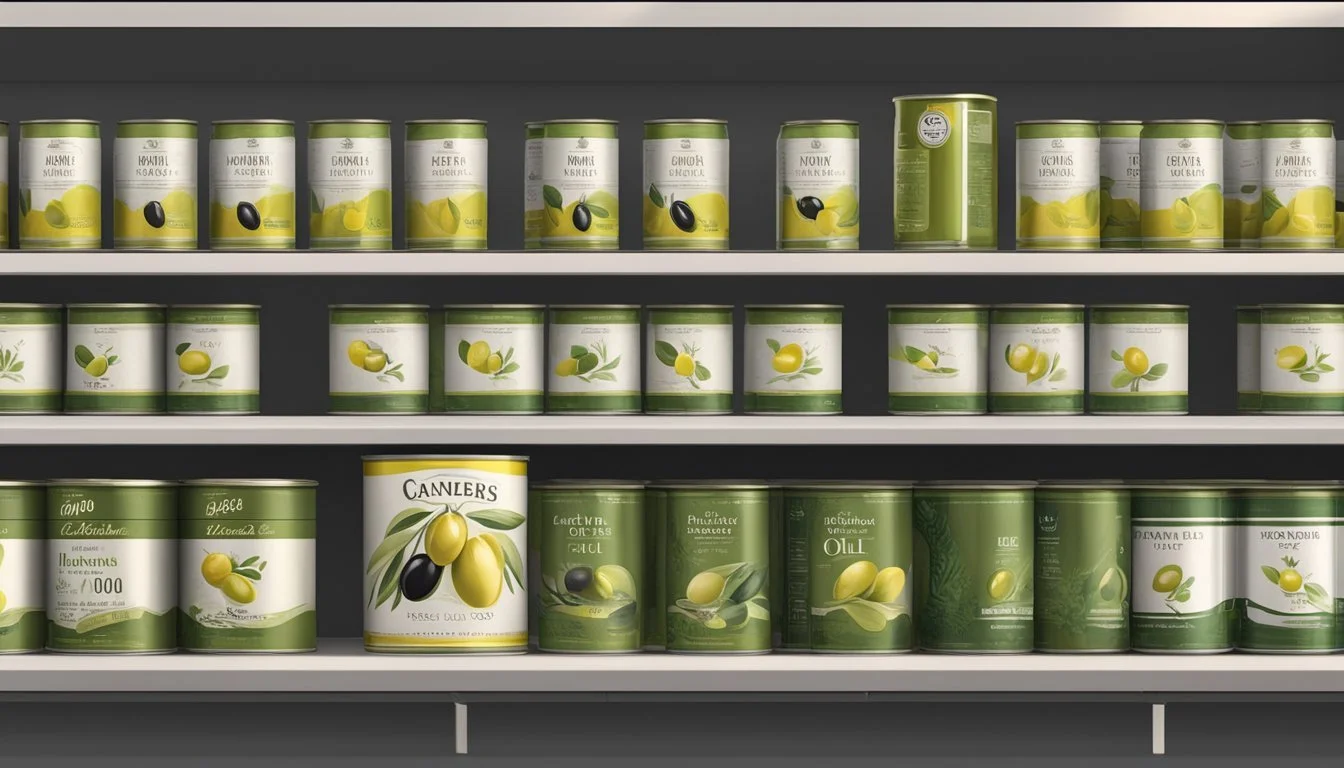How Long Does Canned Olive Oil Last?
Shelf Life and Storage Tips
Olive oil, a staple in many kitchens worldwide, is valued for its flavor and nutritional benefits. It is a versatile product derived from the pressing of olives (What wine goes well with olives?) and has a shelf life that consumers should be aware of to ensure its quality and taste. The longevity of olive oil is influenced by several factors including storage conditions and whether the bottle has been opened. Generally, a good quality olive oil in an unopened can or bottle can retain its freshness for about 18 to 24 months.
Once opened, the shelf life of olive oil decreases, and it is advisable to use it within 30 to 60 days for optimal quality. Proper storage is key to extending the shelf life of olive oil. It should be kept in a cool, dark place, away from sources of heat and light which can accelerate the degradation process. Exposure to air can also lead to the oil becoming rancid, a state in which the oil has a noticeable off-odor and flavor, compromising its quality.
Understanding Olive Oil
When discussing canned olive oil, its longevity, and quality, various factors come into play, including the type of oil, its processing, and how it is stored. This section provides clarity on these points.
Types of Olive Oil
Olive oil is categorized based on processing methods and the quality of the olives used. The main types are:
Extra virgin olive oil (EVOO): Made from pure, cold-pressed olives without the use of heat or chemicals; it's the highest-quality olive oil with a superior taste.
Virgin olive oil: Less refined than EVOO, retaining more of the olive’s natural flavors.
Regular and processed olive oils: These may include blends and are typically treated with heat or chemicals to neutralize their flavors.
Health Benefits
Olive oil is renowned for its health advantages, chiefly due to its high concentration of monounsaturated fats and antioxidants. Key components include:
Monounsaturated fats: These can help reduce bad cholesterol levels in the blood, lowering the risk of heart disease and stroke.
Polyphenols: Antioxidant compounds that may protect the body from cellular damage.
Sensory Qualities
The sensory characteristics of olive oil, such as flavor and aroma, vary greatly and are influenced by olive varieties and regions:
Flavor: Can range from fruity and floral to bitter, peppery, or buttery.
Aroma: Often described as grassy, fresh, with a hint of green fruit.
Texture: Ranges from smooth to more robust and can affect mouthfeel.
Color: Typically falls within a spectrum of green to golden yellow; however, color does not necessarily denote quality.
Harvest and Expiration Dates
Olive oil's freshness is tied to its harvest and expiration dates:
Harvest date: The season of olive harvest can affect the oil’s flavor profile with fall being a common harvest time.
Expiration/best-by date: Usually, olive oil maintains its quality 18-24 months from bottling, but this can vary depending on the type and processing of the oil.
Freshness Indicators
The freshness of olive oil is indicated by several factors:
Smell: Should be free from any rancid or stale odors.
Texture: Fresh olive oil will have a smooth, not greasy, mouthfeel.
Cloudy appearance: Unfiltered oils may appear cloudy and is not an indication of spoilage.
Visibility of sediment can suggest the oil is unprocessed and may have a shorter shelf life.
By understanding these aspects of olive oil, consumers can make informed choices regarding the oil's quality and shelf life.
Factors Influencing Shelf Life
The shelf life of canned olive oil is affected by several key factors, including how it's stored, the packaging type, and exposure to environmental elements. Each of these factors can either preserve the oil's qualities or accelerate its degradation process.
Storage Environment
Ideal storage conditions significantly extend the shelf life of olive oil. Olive oil should be kept in a cool, dark place to prevent spoilage. Temperatures around 57°F (14°C) are optimal, but most importantly, the environment should be consistent, without temperature fluctuations. Storing olive oil in a refrigerator can help maintain freshness, but some oils may become cloudy. This cloudiness is typically reversible and does not affect the quality once the oil returns to room temperature.
Bottle Size and Material
Glass bottles, particularly dark glass bottles, are preferable for storing olive oil. Dark glass helps minimize light exposure, reducing the risk of the oil becoming rancid. Smaller bottles are better as they reduce the amount of oxygen the oil comes into contact with once opened. When olive oil interacts with oxygen, the oxidation process begins, which can cause the oil to spoil quicker.
Exposure to Elements
Olive oil's exposure to light, heat, and air can expedite degradation, causing it to become rancid. Keeping olive oil in a sealed container limits its contact with air and oxygen. Minimizing exposure to light and heat preserves the oil's flavor and extends its shelf life. Dark containers not only block light but also help maintain the oil's integrity by protecting it from the heat that can result from light exposure.
Proper Storage Techniques
Proper storage is crucial for maintaining the quality and extending the shelf life of olive oil. Factors such as light, temperature, and air exposure significantly affect the olive oil's longevity and flavor.
Ideal Conditions
The shelf life of unopened olive oil can reach up to 24 months, and to ensure this longevity, proper storage conditions are essential. Olive oil thrives in a cool (around 57°F or 14°C) and dark place, away from any heat sources. A pantry or a cabinet away from the stove or oven is ideal. Store the bottles upright in an airtight container to minimize oxidation.
Opened Versus Unopened Oil
Unopened olive oil tends to have a longer shelf life compared to opened olive oil. Once opened, olive oil should be used within 30-60 days for optimal quality. To preserve the quality of opened olive oil, ensure it is tightly sealed after each use and returned to its proper storage conditions.
Refrigeration and Freezing
Refrigeration can extend olive oil's shelf life but may cause it to solidify due to the cool temperatures. This does not harm the oil, and it will return to its liquid state when warmed to room temperature. While freezing olive oil is less common, it is also an acceptable storage method; however, it should be noted that repetitive freezing and thawing may affect the oil's quality.
Recognizing Spoilage
When it comes to canned olive oil, recognizing spoilage is crucial to ensure culinary quality and food safety. It involves monitoring changes in the oil and being alert to taste and smell indicators that signal the oil is no longer suitable for consumption.
Changes in Oil
Canned olive oil has a stable shelf life but it's not immune to spoilage. Color changes are one visible sign; oil that begins to appear darker than its original light green or golden hue could indicate aging or oxidation. On the other hand, if the oil becomes lighter and looks greasy or cloudy, moisture or other contaminants may have compromised its quality. Shelf life can be affected by these factors, reducing the oil's lifespan from its typical two-year unopened window. One should consistently check for any signs of spoilage before use.
Taste and Smell Indicators
The taste and smell of olive oil are reliable indicators of its condition. A fresh oil should have a slightly fruity, pungent, or even bitter flavor; a rancid oil, however, often tastes sour or acrid. Smell is equally telling—canned olive oil should have a pleasant, herbaceous odor. If it smells sour, stale, or similar to crayons or putty, these are clear markers that the oil has become rancid. When an oil tastes bitter or distinctly sour, or if it leaves a greasy aftertaste, it has likely spoiled and should not be used.
Using Expired Olive Oil
Expired olive oil may have lost the vibrant, grassy flavor profile ideal for culinary uses, but it can still be utilized in various non-food applications.
Culinary Uses
Expired olive oil, while not suitable for fresh applications such as dressing salads or acting as a dipping oil for bread due to taste degradation, may still serve in cooking processes where its flavor is not the focal point. For example, using it in baking or sautéing can be acceptable, as long as the oil hasn't turned rancid, which is characterized by a noticeably stale or waxy taste.
When using expired olive oil for cooking:
Baking: Replace butter or vegetable oil with expired olive oil for a potentially subtler, less buttery taste.
Sautéing: Use for vegetables or proteins where the oil's compromised flavor will be masked by other ingredients.
Alternative Applications
When olive oil is past its best-by date, it may still offer benefits outside the kitchen. One can incorporate expired olive oil into a skin care routine, as a hydrating agent that nourishes and smooths the skin. Here is how one can repurpose the oil:
Skin Care: Apply the oil directly to the skin, allowing it to soak before washing off. It may still carry conditioning benefits even though its bright flavor has faded.
Leather Conditioning: Expired olive oil can help soften and preserve leather goods, offering a safe, chemical-free alternative to store-bought products.
Note: Always ensure that the expired olive oil does not smell rancid before use, whether in cooking or alternative applications, as this indicates it may be harmful.
Maximizing Olive Oil Shelf Life
When it comes to extending the shelf life of canned olive oil, understanding how to select, handle, and use it properly is crucial. Adhering to these practices ensures the quality and freshness of the oil for a longer period.
Purchasing Tips
Selecting Quality: Opt for extra-virgin olive oil for its superior quality and the benefits of retaining more natural vitamins and minerals. When possible, choose oils labeled olio nuovo, a specialty, freshly-harvested type known for its intense flavor.
Packaging Matters: Look for olive oil in dark glass bottles as this helps protect the oil from light, which can accelerate degradation.
Check the Date: Always check the harvest date; fresher oils will last longer. Smaller bottles may seem less economical, but they ensure that oil is consumed before it spoils.
Handling Practices
Storing Correctly: Store olive oil in a cool, dark place, ideally in an airtight container to minimize exposure to air and prevent oxidation. Keep the olive oil away from heat sources, such as the stove or countertop where sunlight may directly hit it.
Temperature Control: Maintaining a consistent temperature, ideally around 57 degrees Fahrenheit (14 degrees Celsius), further extends shelf life.
Usage Strategies
Using Wisely: To preserve its freshness, use the olive oil for dressing salads, drizzling over dishes, or for low-heat cooking like sautéing. Higher temperatures can diminish the oil's quality and flavor.
First In, First Out: Adopt a first-in, first-out approach to use older bottles first, maintaining freshness in your ongoing supply.
Mindful Pouring: When using olive oil, pour only what you need to avoid wasting and exposing a larger surface area of the oil to air.
Closely Related Topics
In examining the longevity of canned olive oil, it is important to consider its comparison with other oils, nutritional content, and industrial application. These elements contribute to understanding olive oil's shelf life and overall value.
Comparison with Other Oils
Different oils have varying shelf lives, influenced by their composition and storage conditions. Olive oil, particularly extra virgin olive oil (EVOO), contrasts with other vegetable oils in several ways. EVOO is known for its high content of monounsaturated fats and antioxidants like polyphenols, which can extend its shelf life. Most vegetable oils contain higher levels of saturated fats that can turn rancid more quickly. However, olive oil should ideally be stored in dark glass bottles or tins to protect it from light, which can degrade its quality.
Nutritional Information
Olive oil, especially extra-virgin and virgin olive oil, offers a rich blend of nutrients that contribute to its health benefits. It is predominantly composed of monounsaturated fat, known for its heart-healthy properties, and contains valuable antioxidants. The nutritional profile of olive oil not only benefits one's health but also impacts how it should be stored and its shelf life. Extra-virgin olive oil is often regarded as the highest quality with greater nutritional benefits due to its method of production, which involves mechanically pressing the fruit of olive trees without heat.
Olive Oil in Industry
The quality of olive oil, specifically extra-virgin olive oil, is integral in the food industry, where it's valued both for its flavor and health attributes. This specialty oil, often presented as olio nuovo shortly after its harvest, is sought after for its freshness and quality. The industrial use of olive oil not only focuses on culinary applications but also on its health benefits and the role it plays in maintaining freshness and shelf stability.
FAQs
This section addresses common questions related to the longevity, proper storage, and utilization of canned olive oil, ensuring consumers can maintain its quality and flavor.
Shelf Life Queries
How long can one expect canned olive oil to last?
Olive oil typically has a shelf life of 18 to 24 months from the bottling date, provided it remains unopened and is stored correctly. The presence of a best-by or expiration date on the label could offer a more precise timeframe.
Does the type of olive oil influence its shelf life?
Extra virgin olive oil, being less processed, may have a somewhat shorter shelf life compared to more refined varieties. Regardless, one should ideally consume it within 30 to 60 days once opened for the best quality.
Storage Questions
What is the ideal way to store canned olive oil?
To preserve olive oil's quality, one should store it in a cool, dark place, away from heat and light which can degrade its flavor. A pantry or a cabinet away from the stove is usually adequate.
Is there a benefit to refrigerating olive oil?
Refrigeration can extend the shelf life but may cause the oil to become cloudy and solidify. This doesn't damage the oil; it will return to its liquid state when warmed. However, for everyday use, refrigeration is generally not necessary if the oil is kept in an airtight container and used within its shelf life.
Usage Concerns
How does one tell if olive oil has gone bad?
If olive oil develops a sour, moldy, or crayon-like smell, it's an indicator it has gone bad. The taste will also be off—either bitter or stale—which can affect the outcome of dishes, whether one is baking, dipping, or sautéing.
Can you still use olive oil past its best-by date?
Using olive oil past the best-by date might not harm health, but the oil may lose some of its flavors and nutritional value. It's best to use olive oil within the recommended timeframe to ensure the quality of one's cooking.
Conclusion
The longevity of canned olive oil is influenced by several factors. High-quality olive oil can remain fresh for up to 24 months when unopened and stored in optimal conditions—cool and away from direct light. Once opened, it is advisable to use the olive oil within 30-60 days to enjoy its best quality.
Shelf Life of Unopened Olive Oil:
Typical Duration: 18-24 months
Storage Conditions: Cool, dark place
It is essential to note some bottles may display a harvest date, which helps determine the oil's freshness period. Olive oil should be handled with care, as its quality is susceptible to degradation due to factors like light exposure, heat, and improper storage.
For consumers, understanding the shelf life of olive oil is crucial to ensure every usage is coupled with the intended flavor profile and health benefits. The oils harvested in the annual fall season should typically be consumed before the 18-month threshold post-harvest to retain their character and taste.
Given these points, consumers are equipped with the essential information to gauge the life span of their olive oil and utilize it to its fullest potential, reflecting both high-quality taste and nutritional integrity.











